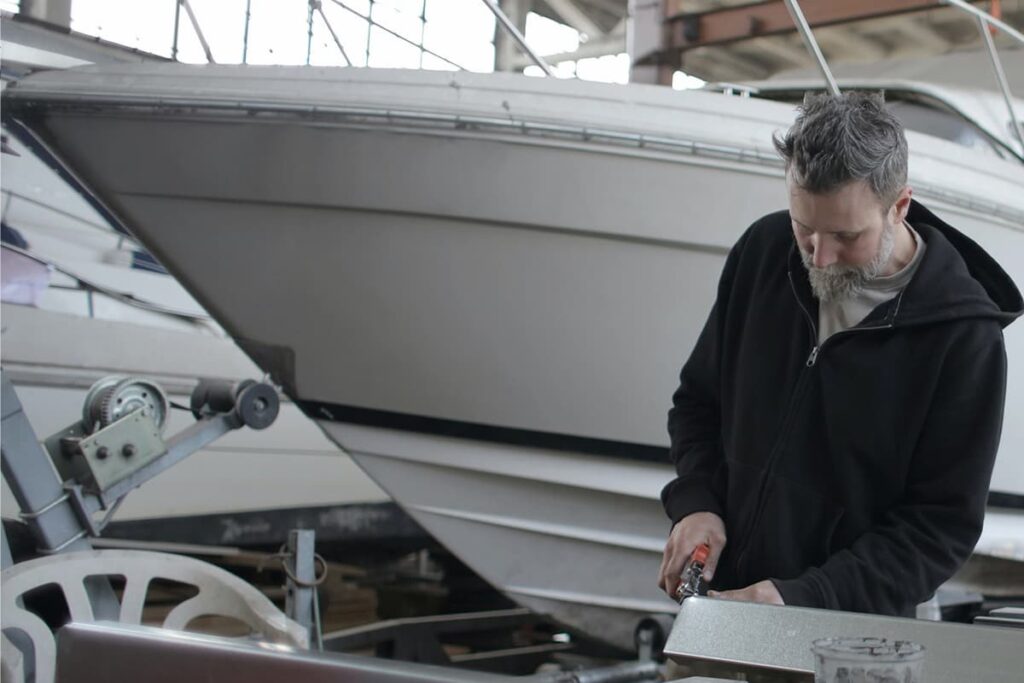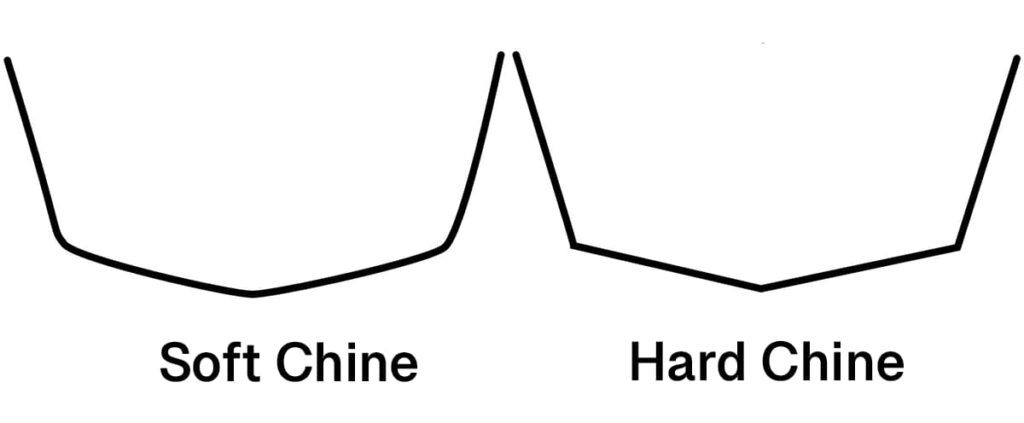Boat chines, an essential aspect of watercraft design, play a critical role in a vessel’s stability, performance, and handling. To understand their importance, we need to delve into the intricacies of boat design, covering topics like boat hulls, boat stability, and hydrodynamics.
In this comprehensive article, we’ll explore boat chines in-depth, examining their purpose, characteristics, and impact on various types of watercraft.
The Significance of Chines in Boat Design
Boat chines are the lines that form the intersection between a boat’s hull bottom and its sides. They primarily serve to enhance the hydrodynamics, stability, and overall performance of a vessel. The design of chines can significantly impact a boat’s maneuverability, tracking, speed, and efficiency. With an emphasis on boat customization, marine engineering aims to develop the optimal chine design for specific watercraft applications.

Hard Chines vs. Soft Chines: The Key Differences
Understanding the differences between hard chines and soft chines is vital for any boat enthusiast or marine engineer. Hard chines have a sharp, angular transition between the hull bottom and the sides, while soft chines feature a more gradual, rounded curve.
Hard chines offer several advantages, including increased stability, especially when a boat is at rest or moving slowly. They also provide a more significant planing surface, enabling the vessel to reach higher speeds with less drag. Powerboats, racing boats, and some sailboats often feature hard chines for enhanced performance and maneuverability.

On the other hand, soft chines are known for their improved handling in rough waters and their ability to reduce the boat’s tendency to roll. With their smooth, rounded design, soft chines contribute to a gentler, more comfortable ride. You’ll often find soft chines on cruising boats, kayaks, and canoes, where stability and comfort are prioritized over speed and performance.
The Chine’s Role in Boat Construction and Aesthetics
Chines not only impact a boat’s performance but also play a crucial role in its construction and aesthetics. The chine part of a boat influences its overall shape, which in turn affects its appearance and how it interacts with water.
The choice of chine design depends on the intended use and desired characteristics of the watercraft. For example, racing boats typically feature hard chines for their speed and maneuverability advantages, while cruising boats may lean towards soft chines for a smoother, more comfortable ride.
Moreover, the chine design can impact the boat’s construction process. Hard chines can simplify the building process, as they often require fewer materials and less complex assembly. Conversely, soft chines may necessitate more intricate craftsmanship and a more extended construction timeline.
Chine Angle: A Critical Factor in Boat Performance
Another essential aspect of boat chines is the chine angle, which refers to the angle formed by the intersection of the hull bottom and sides. This angle directly impacts a boat’s hydrodynamic properties and performance.
A greater chine angle often results in better stability when the boat is at rest or moving slowly. However, it may also cause increased drag when the boat is moving at higher speeds. A smaller chine angle, on the other hand, can improve the boat’s performance at higher speeds, as it reduces drag and enables the vessel to slice through the water more efficiently.
Marine engineers and boat designers must carefully consider the chine angle when customizing a watercraft, striking the perfect balance between stability, performance, and efficiency.
The Impact of Chines on Various Watercraft Types
Chines play a significant role in the design and performance of various watercraft, including powerboats, sailboats, kayaks, and canoes
. The choice of chine design largely depends on the intended use and desired characteristics of the watercraft in question.
Powerboats
Powerboats often feature hard chines to optimize their planing surface, speed, and maneuverability. The increased stability provided by hard chines also allows for better handling in tight turns, a crucial feature for boats built for speed and performance.
Sailboats
Sailboats can have either hard or soft chines, depending on their intended use. Racing sailboats typically have hard chines to enhance their speed and performance, while cruising sailboats might have soft chines for better comfort and stability in rough waters.
Kayaks and Canoes
Kayaks and canoes generally feature soft chines for improved handling in rough waters and reduced rolling tendencies. The smooth, rounded curve of soft chines allows these smaller watercraft to cut through the water with less resistance, ensuring a more comfortable and stable ride.
Chines and Strakes: Understanding the Difference
In the context of boat design, chines and strakes are two distinct features with specific functions. As we’ve discussed, chines are the lines where the hull bottom meets the sides. Strakes, on the other hand, are longitudinal ridges or stiffeners on the boat hull’s exterior, designed to enhance the vessel’s strength, rigidity, and hydrodynamics.
Strakes can improve the boat’s tracking, stability, and speed by directing water flow along the hull and reducing turbulence. While both chines and strakes play essential roles in a boat’s performance, they serve different purposes and should not be confused with one another.
The Future of Boat Chines: Innovation and Customization
As marine engineering and watercraft design continue to evolve, we can expect to see even more innovation and customization in the realm of boat chines. Designers and engineers are constantly experimenting with new chine designs and materials to improve the stability, performance, and efficiency of boats across various applications.
From racing boats to cruising vessels, the choice of chine design will remain a critical aspect of watercraft development. By understanding the nuances of boat chines, boat owners, designers, and enthusiasts alike can better appreciate the intricate world of marine engineering and make more informed decisions about their watercraft.
In conclusion, boat chines are an integral component of watercraft design, impacting a boat’s stability, performance, and handling. By understanding the differences between hard and soft chines, the role of chine angle, and the unique considerations for various watercraft types, we can truly appreciate the art and science of marine engineering.
With constant innovation in the field, the future of boat chines looks bright, promising even better performance and customization for watercraft enthusiasts around the world.
- Types of Gas Carriers as per IGC Code – April 22, 2025
- Wind-Assisted Propulsion Systems (WAPS): A Game Changer for Maritime Decarbonization – February 6, 2025
- 10 Boat Salvage Yards in California – January 25, 2025



